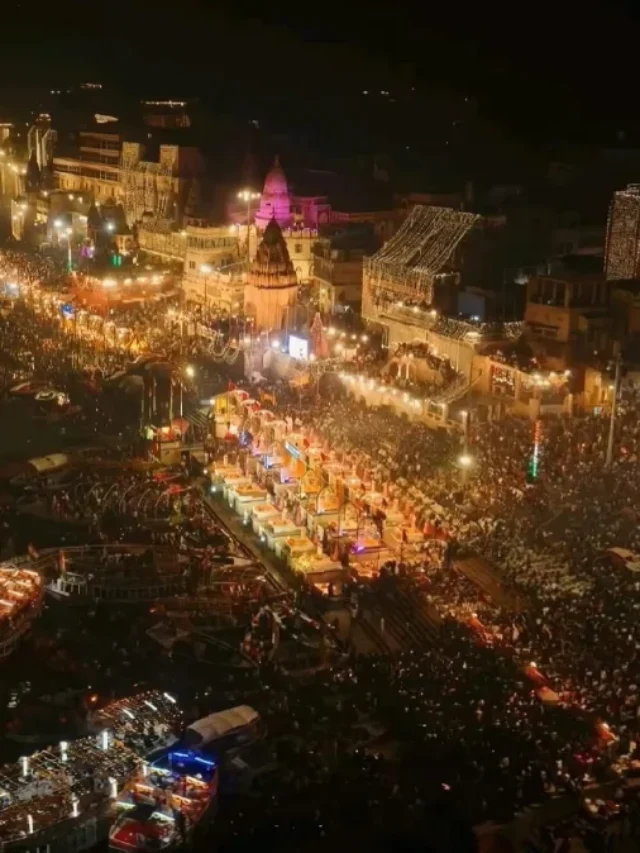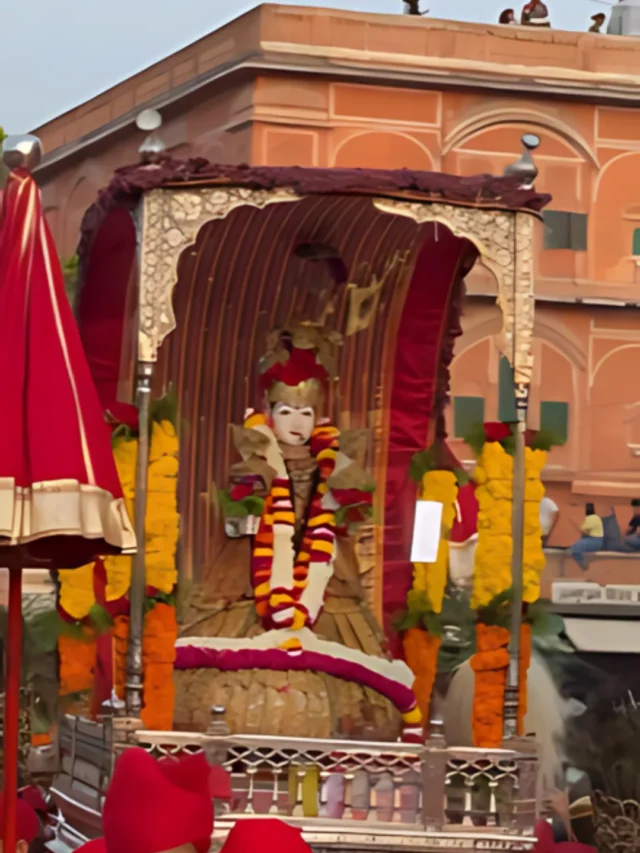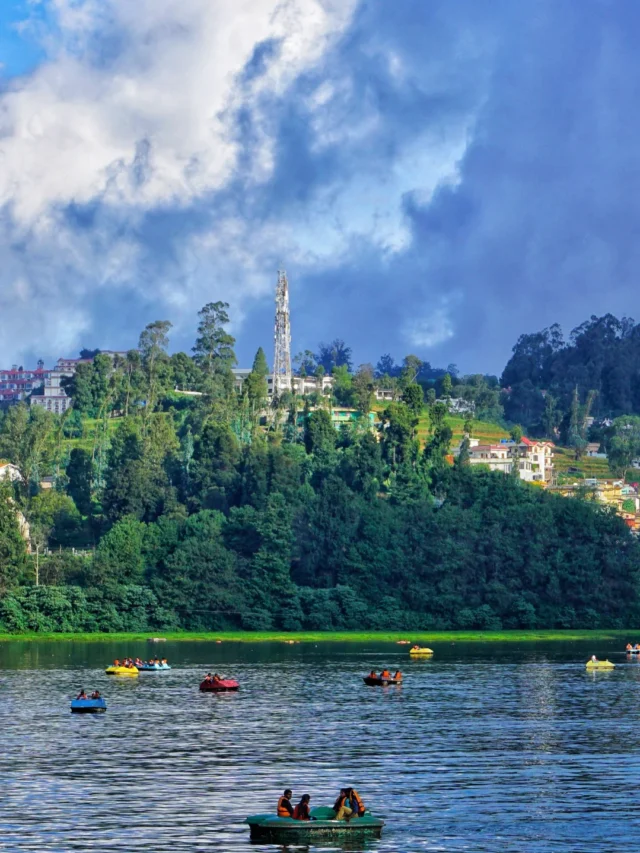Are you looking for a comprehensive travel guide to help you find the best places to visit in Amarkantak? This blog is the perfect space for you! Today’s blog will explore the ins and outs of Amarkantak – one of India’s most prominent pilgrim hill stations. Read on to find the best places to visit in Amarkantak, the things to do while there, the best time to visit, how to reach here and more!
Amarkantak: The Birthplace of Narmada
Called “Teerthraj” – “the king of pilgrimages” – Amarkantak is a well-known Hindu pilgrimage site. In addition to its spiritual importance, the city is renowned for its abundance in terms of natural resources and geography. It is where the Vindhya and Satpura Ranges converge, with the Maikal Hills being their most notable. From an ecological perspective, it is very noteworthy because of the abundance of plants with therapeutic characteristics found in the surrounding woodlands.
This location is unique because Amarkantak is the source of the Narmada River, one of India’s Holy Rivers. Moreover, the rivers Narmada, Sone, and Johila converge here. Its lush woods are home to various plants with therapeutic qualities, making it noteworthy from an ecological perspective. Sant Kabir, the spiritual poet, is said to have pondered on Kabir Chabutra here. Amarkantak is renowned for having a vibrant cultural history.
Amarkantak: Historical and Mythological Significance
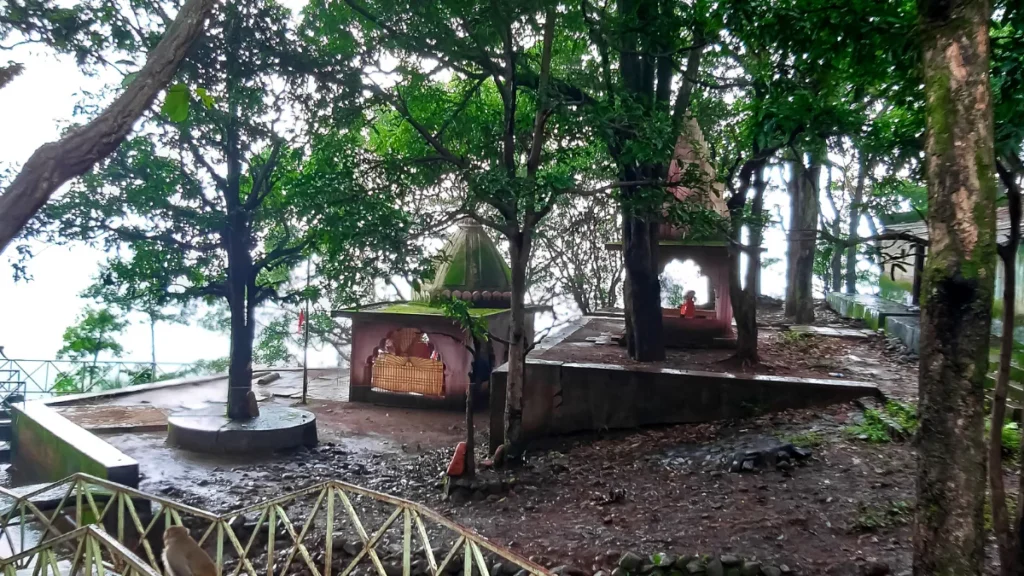
The Sanskrit term Amarkantak, which translates to “eternal source,” strongly connects to the holy Narmada River, one of India’s most revered and special rivers. Every year, a sizable number of travellers, both religious and environmental enthusiasts, go to this location to discover its unique qualities. Many mango (amra) trees are in the town, leading some people to assume that the famed Sanskrit poet Kalidas named the city “Amrakoot.”
Amarkantak is a territory steeped in legends, having seen several civilisations come and go, from the Pandavas to foreign conquerors to the present age. Several temples depict the reigns of various emperors. One tale that is said to exist here is that after Lord Shiva destroyed Tripura by fire, the ashes landed on Amarkantak, where they transformed into thousands of shivalingas. In Jwaleshwar, one may observe such a sign. Since then, it has been held that those who pass away at this location will enter paradise.
Top 9 Places to Visit in Amarkantak
Kapil Dhara Falls – One of the Perfect Places to Visit in Amarkantak
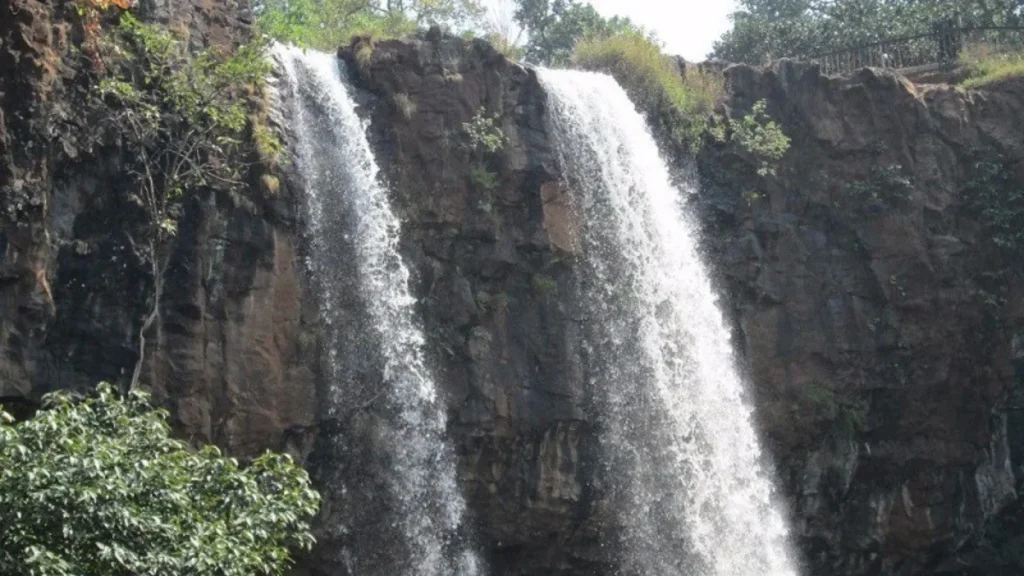
One of the best places to visit in Amarkantak is Kapil Dhara, which is well-known for its spiritual and religious charms. Situated barely 6 kilometres northwest of the Narmadakund Temples, it is recognised as the original waterfalls on the Narmada River. The sage Kapil Muni said to have meditated here, is honoured by the waterfall’s name. The waterfall is surrounded by thick greenery and is around 100 feet tall. Visiting during the monsoon season is advised to appreciate the beauty of the falls fully.
Dugdh Dhara Falls – Milky Waterfalls
Travellers often walk one km from Kapil Dhara, a well-known sight in Amarkantak, to the nearby Narmada waterfall, Dugdh Dhara. Wild plants and rocky stairs enhance the natural beauty of the surroundings on this picturesque route. The waterfall’s name comes from its frothy milk-like water cascade called “Dugdh Dhara.” This walk has become a tourist must-do since it provides physical exercise and a breathtaking display of nature’s beauties. It’s a thrilling journey that adds to the charm of the town’s natural surroundings, blending rugged terrain and calming river flow.
Sone Muda – The River of Gold
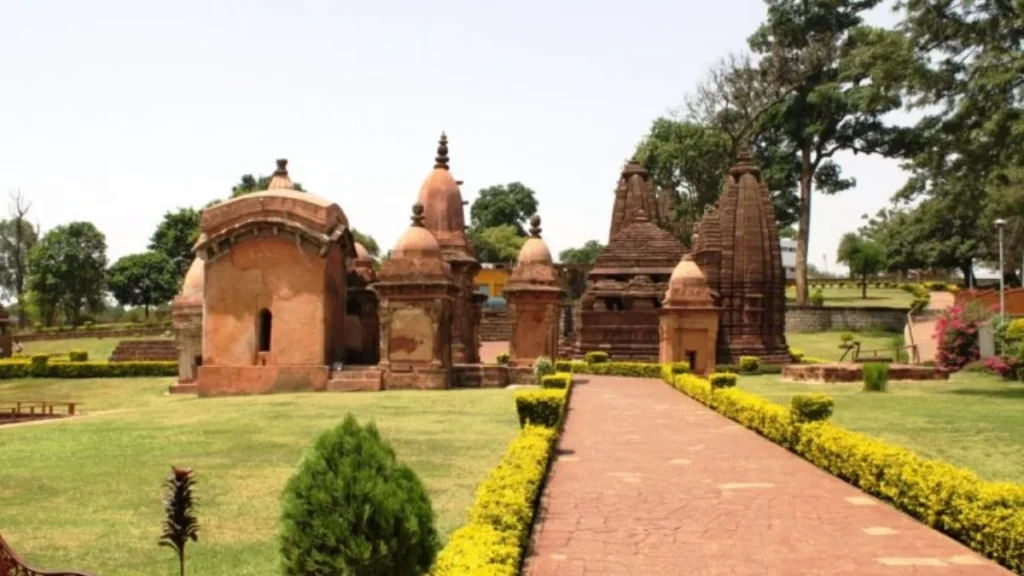
The Son River is said to have gotten its name from gold dust found in its water, according to historical accounts dating back to the Greek historian Megasthenes (350290 BCE). Presumably the river’s source, the location boasts an ancient ashram, a Shiva statue, a relatively recent Shaktipeeth temple, and a pond. The surrounding grandeur becomes evident once you reach the extreme edge of the Amarkantak Plateau by descending the roughly 100 stairs carved into the slope. From this vantage point, you can view the Son descending the Maikul mountain, distant settlements spread over the wide plains below, and the numerous soft curves of the Satpura Hills.
Mrityunjay Ashram – For Peace and Solace
Visit the Mrityunjay Ashram to find peace amid the bustle of the city. This peaceful sanctuary provides an escape from the bustle of the city. Look for a quiet place to meditate inside the ashram to rejuvenate your spirit. A stroll through the garden is made possible by the gorgeous atmosphere created by the thick flora surrounding the ashram. Amid the dynamic activity of the city, embrace the seclusion, find comfort, and use Mrityunjay Ashram’s serene ambience to serve as a haven for peaceful introspection.
Kabir Chabutra – Home of Saint Kabir
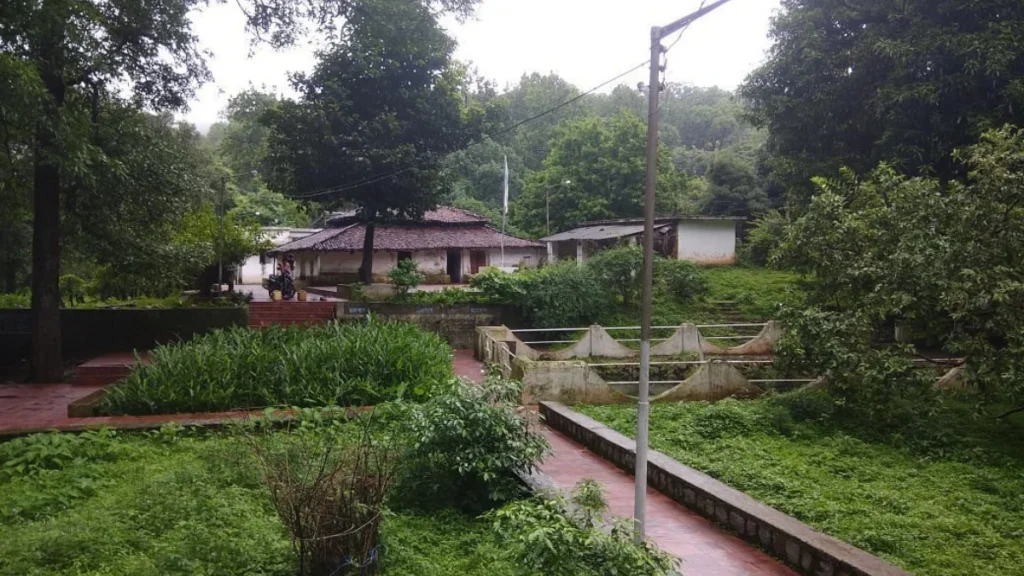
Kabir Chabutra, one of the most important places to visit in Amarkantak, is 5 km from the town on the road to Bilaspur. This hallowed location is said to be where Saint Kabir gained knowledge and met Lord Guru Nanak. The chabutra is a calm body of water where, every morning, between 9 and 10 am, a captivating show of white smoke is displayed. Among the site’s embellishments are a notable banyan tree, a spot where Saint Kabir meditated, and a little cottage that symbolises his home. The neighbouring walking path’s popularity among residents and visitors further enhances this historically significant and spiritually charged location.
Narmada Udgam – The Origin of Narmada
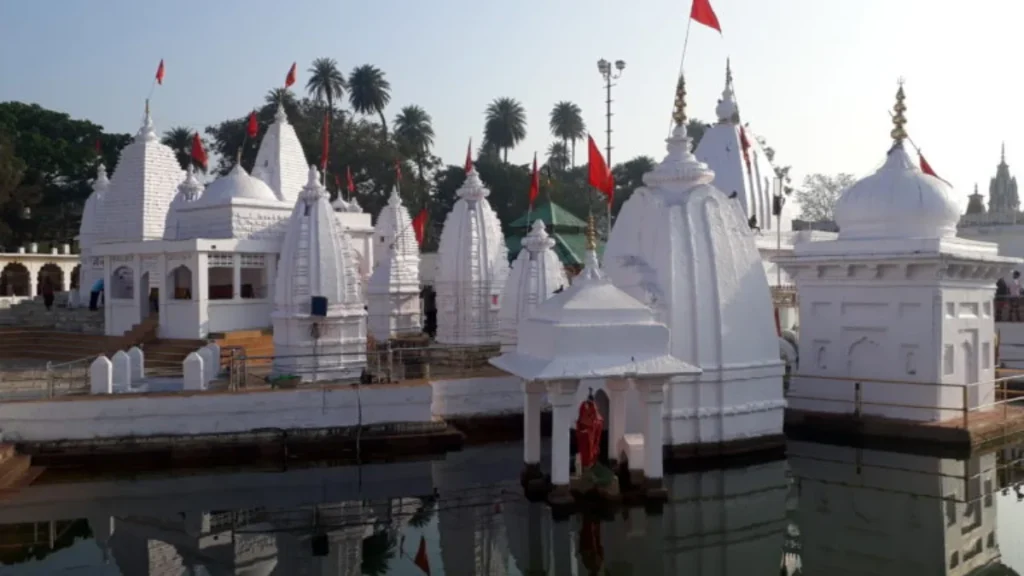
For some who think the waters of the holy kund are the source of the Narmada River, this walled complex of shrines serves as a focal point. Pilgrims participating in religious ceremonies and washing procedures are drawn to the kund. Shining white shrines surround two tanks inside the compound. A gaumukh-shaped spout (cow’s mouth) directs water from the sacred tanks. The Bhonsle rulers of Nagpur commissioned the construction of the Narmada Temple in the 18th century, which houses a black stone statue of the river goddess with big silver eyes. Devotees gathered around a small pond and showered water on the goddess’s picture following their descent. The black basalt monument attracts ardent devotees when decorated in brocade during Narmada Jayanti. Adjacent to the Amarkantakeshwar Shivalinga is the Karna Matha temple, which dates back to the 10th century and was constructed by the Jabalpur Kalachuri Dynasty. These shrine-ringed ruins contain symbols honouring Surya, Vishnu, Gorakhnath, and Shivalingas, illuminating the region’s rich cultural and historical heritage.
Bhrigu Kamandal – Once a Home to Rishi Bhrigu
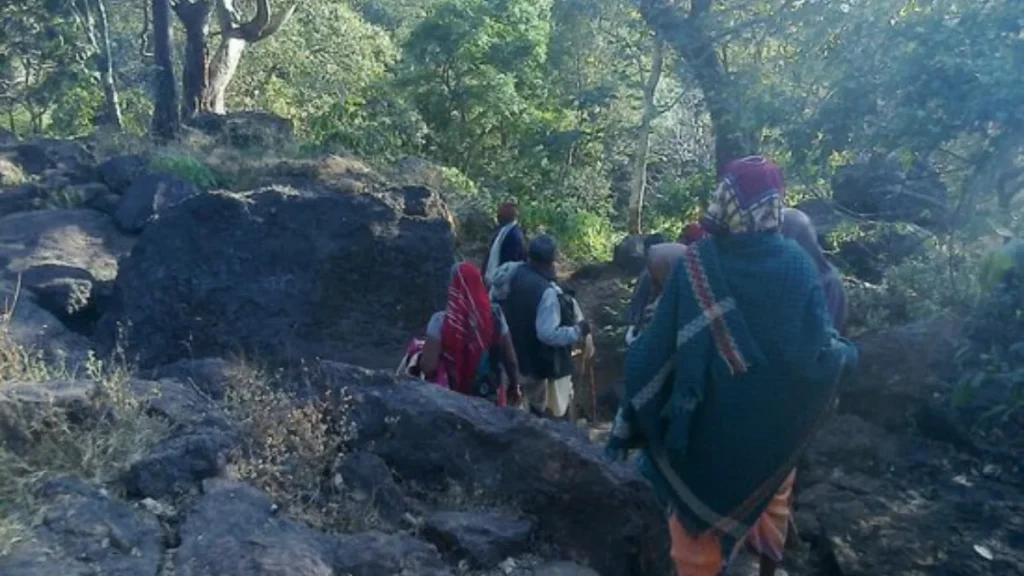
If you value serene walks in nature’s lap, Amarkantak welcomes you to experience the stunning hiking track among the thick woods of Bhrigu Kamandal. This place has a mystical and attractive air since locals tell stories of Rishi Bhrigu taking refuge in a tiny cave here during the monsoon. Discover the enthralling beauty of this forest as you wander through the thick greenery; it is ornamented with a remarkable rock known as “Rishi’s Water Glass.” Take in the peace of this natural sanctuary, where the footsteps of the ancient sage reverberate through the ages and the picturesque charm of the town emerges in the middle of the deep jungle of Bhrigu Kamandal.
Shri Yantra Mandir – One of the Oldest Places to Visit in Amarkantak
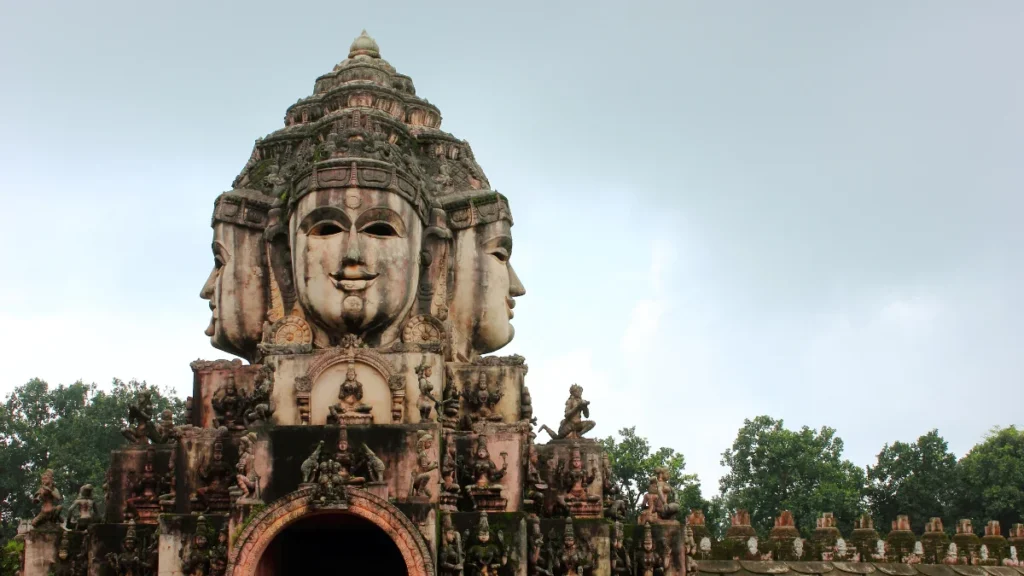
Hindu visitors have a special place in their hearts for the Trimukhi Temple, one of the most fascinating places to visit in Amarkantak. Known as “Karna Mandi,” it is devoted to Lord Shiva and honours King Karnadeb Mahachandra of the Chhedi dynasty. Ensure you visit the temple’s highest point, where Lord Shiva’s holy visage is exquisite. It is the oldest temple here and is renowned for its historical and spiritual significance. The Trimukhi Temple is a must-visit location for anyone looking for a fusion of spirituality and history since it provides a window into the religious fervour and a link to the area’s rich cultural legacy.
Mai Ki Bagiya – Beautiful Flower Garden
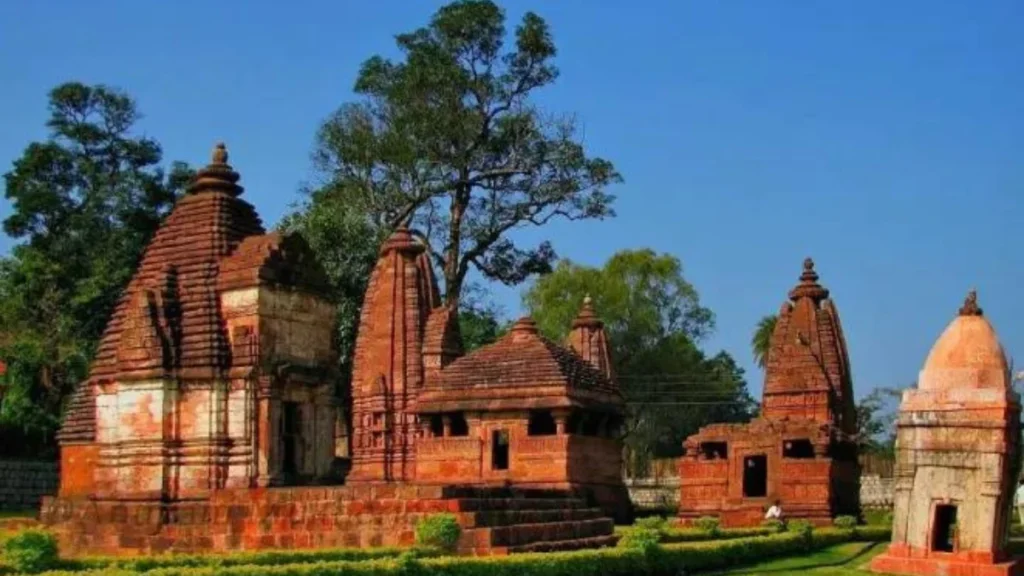
One of the most important places to visit in Amarkantak is Mai ki Bagiya, a peaceful natural tree grove honouring the Goddess Narmada and tucked away among verdant forests. The garden has abundant colourful plants, such as Gulbakavli, roses, and other blooming plants. Mango, banana, and other fruit trees are also present. The Charanodak Kund pond is in the centre of the area, and a modest temple to the Goddess Narmada enhances the spiritual atmosphere. There is a legend that the Narmada River truly began at this spot. A hint of mystery permeates this charming place as the water stream that is supposed to have originated in Mai Ki Bagiya is said to have travelled through time and culminated at the revered Narmada origin shrine.
Kalachuri Temples – Witness History Here
The Kalachuri Period’s Ancient Temples are proof of Kalachuri Maharaja Karnadeva’s mastery of architecture (1042 – 1072 AD). The Pataleshwar Mahadev Temple and the Machhendranath Temple are prominent instances of this genius. These ancient wonders of Amarkantak are currently under the Archaeological Survey of India (ASI). They are located just behind the Narmada Temple. The temple complex, one of the main places to visit Amarkantak, attracts visitors because of its extensive historical and cultural value. Admire the exquisite artistry and design that pay homage to the Kalachuri dynasty’s past and transport tourists to this hallowed pilgrimage site through time and culture.
Best Things to Do in Amarkantak
Shopping in Amarkantak

Amarkantak provides a distinctive shopping experience that allows you to fully immerse yourself in the local way of life while reminiscing over fond experiences by purchasing mementoes. Treasures abound in the marketplaces here, awaiting discovery, ranging from handicrafts to sacred items. Narmada Udyog Bazar and the Tribal Emporium are the best places to visit in Amarkantak for a vibrant shopping experience.
Indulge in Night Trekking
Take on the excitement of an overnight walk in Amarkantak, a tempting experience for anybody looking for a surge of adrenaline. Explore the ethereal splendour of the moonlit trees around you and follow undiscovered paths to discover the captivating allure of the pitch-black town. This nighttime adventure provides a new viewpoint of the hill station’s tranquil scenery and an exhilarating excursion. Adventure seekers will have an amazing experience as they make their way through the stillness of the night, where each step reveals the secrets of the wild. Night treks offer a chance to see nature under the alluring moonlight or a new perspective.
Walk Along the Narmada River
Enjoy the peace of Amarkantak by taking a stroll along the banks of the Narmada River. Take in the serene atmosphere when you gaze at the shimmering waves and find comfort in the lovely surroundings. The soft sound of the river flowing through you will captivate your senses and provide a calming tune that blends in with the surrounding natural symphony. This serene stroll offers a glimpse into a deep connection with nature and a brief escape from the daily grind. A walk along the Narmada River invites you to enjoy the beauty and tranquillity of the river’s embrace in this enchanted location, whether in moments of contemplation or lighthearted delight.
Best Time to Visit Amarkantak
Amarkantak’s ageless charm always stays in style, drawing tourists year-round with its ever-changing array of breathtaking natural features. It is a place that defies time limits since each season creates a distinct and alluring image. It exhibits its captivating qualities throughout the year, whether decked out in the vivid colours of spring blooms, the verdant foliage of the monsoons, the cosy tones of autumn, or the placid whites of winter. This diversity gives the environment a dynamic beauty and gives tourists a chance to see the mesmerising evolution of the area. Amarkantak is a place that never goes out of style, offering visitors the chance to experience its timeless beauty throughout the year, whether seeking the crispness of a spring morning or the warm embrace of a winter day.
How to Reach Amarkantak
By Air: Jabalpur Airport and Raipur Airport are the nearest airports to Amarkantak. From there, you can take a cab or bus.
By Road: Amarkantak has excellent road connectivity. Regular buses operate from major cities in Madhya Pradesh and Chhattisgarh, including Jabalpur, Bilaspur, Raipur, etc. You can also drive here if you own a car. And you may reserve a taxi if you don’t own a car but still want a relaxing trip.
By Rail: Pendra Road Railway Station is the closest railway station to Amarkantak. You may catch a bus or cab from Pendra Road. Another option is to get a taxi from a local, who can tell you about all the hidden treasures in the area and pique your curiosity with tales and folklore from the area.
Conclusion
Amarkantak is a beautiful hill station in the Satpura range of Madhya Pradesh. It is a holy place and one of the most important pilgrim sites for Hindus. There are many places to visit in Amarkantak, like Narmada Udgam, Shri Yantra Temple, Kabir Chabutra, Kapil Dhara and more. If you visit this beautiful spot, you must stay at least 3 days here to take in the spiritual vibes.
Plan the perfect trips to the best locations in India, like Amarkantak, with The India Explorer!




